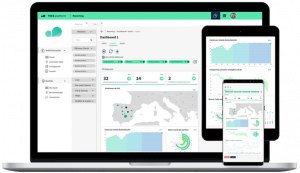«Lean is a way of thinking, not a list of things to do»
Shigeo Shingo
The standardization and optimization of business processes is one of the most beneficial methodologies to improve the productivity of an organization. Minimizing errors, ensuring the correct performance of work, exponentially improving the quality of service or product, and facilitating the ability to calculate costs, are some of the competitive advantages that the implementation of these processes provides.
Each organization is different, but when it comes to waste, they all pursue the same goal, trying to minimize it as much as possible. When we refer to business waste or Muda (Japanese term commonly used in Lean methodologies), we talk about everything that generates inefficiency including misuse of time, transportation, processes, inventory, defects, overproduction or movements.
Thus, defining, organizing, standardizing and monitoring processes in a stable and consolidated manner allows for greater traceability of the activities carried out and, therefore, reduces any movement within an activity that uses resources, without adding value to the product or service.
However, to generate these processes in an efficient and useful way, first of all, it is necessary to know precisely the business strategy of the organization: A business strategy consists of planning in order to obtain premeditated established objectives, these can be found in the range of short, medium or long term.
Within this planning we can analyze aspects such as:
- Mission of the company.
- Business vision, the objectives to be achieved.
- Values and ideals that shape and guide the members of the company.
- The market, sector or environment.
- The competition you are facing.
Once the previous aspects are established, the next step will be to define the current situation of the processes being developed. To facilitate the definition of these processes it is advisable to use AS IS process mapping tools, with which we can represent the current internal processes of a company.
The results obtained will help generate analyses and reports diagnosing the efficiency of current processes, and new opportunities for improvement.
Moving on to the next step. The redesign of processes, through TO BE process mapping, which will guide us to solve the problems faced by the organization, improving or eliminating those aspects that prevented efficiency, and implementing new integrated work models designed specifically for the organization.
After obtaining the results, we can proceed to standardize the processes and test them during their use to verify that all the processes created are in accordance with the needs required by the organization, in a model of continuous improvement in successive iterations.
We understand processes as an orderly and defined planning of actions to be carried out to achieve a certain objective. The main goal of this planning is to achieve the success of the planned task with the minimum cost/time investment, that is, in an optimized and efficient way.
These processes should always be accompanied by documentation and operational manuals that develop the tasks in a simple and explicit way, so that all members of the organization can understand its use and purpose, and that there is an appropriate Digital adoption through an efficient Change Management.
At Atrebo we have implemented the standardization and optimization of our asset management digital transformation in business processes, to make the development of our customers’ tasks more efficient and productive. Request a Free Demo to learn more.


